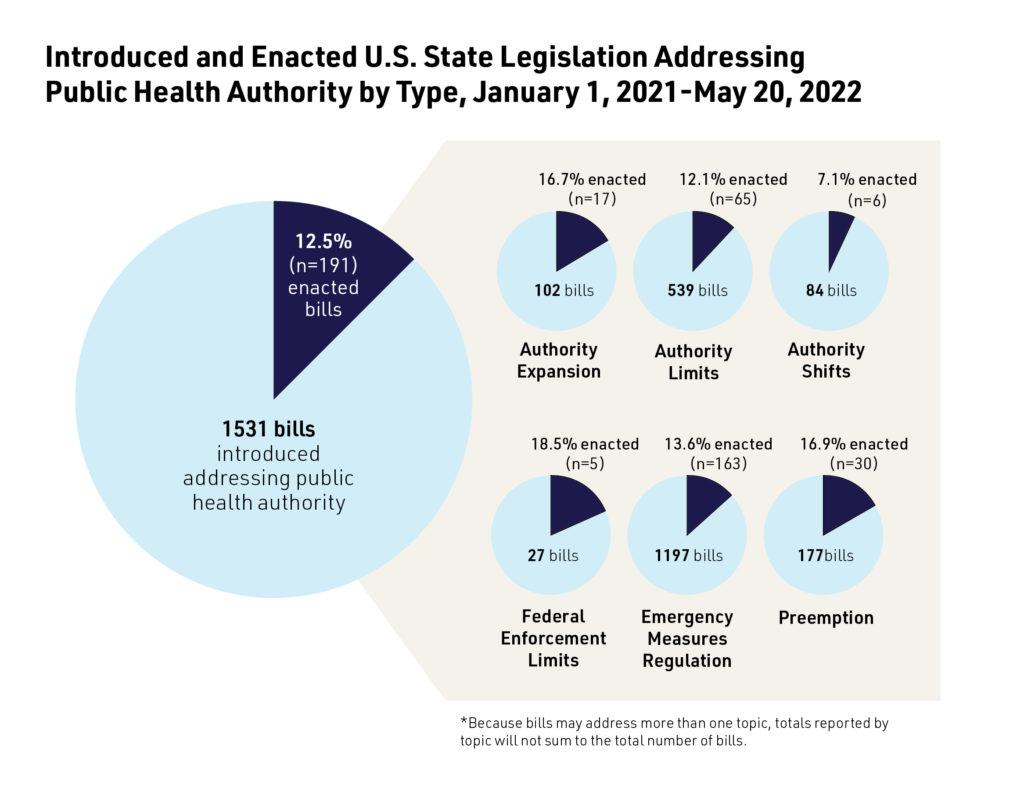By Temple University Center for Public Health Law Research
COVID-19 called for quick, decisive action by public health authorities to support communities and prevent infections. Since the pandemic began, legislators around the country have been acting to change the way authorities may respond to future public health emergencies — expanding or limiting officials’ authority to act in an emergency, changing who has authority to act, and the actions they may have the authority to take.
New research by the Center for Public Health Law Research at Temple University’s Beasley School of Law, in collaboration with the Association for State and Territorial Health Officials and the Network for Public Health Law, capture details of legislation that addresses emergency health authority introduced between January 1, 2021, and May 20, 2022, in all 50 states and the District of Columbia.
In the legislative sessions starting in January 2021 through May 20, 2022, state legislators introduced 1,531 bills to change the scope and allocation of emergency health authority.
Of those 1,531 bills, 191 (about 12.5%) were enacted into law in 43 states and the District of Columbia, including seven via veto override.
The data show that the most common type of bill enacted (163 of the total 191 bills enacted) were those that regulated the use of specific disease control measures, including vaccination requirements and mask mandates.
Sixty-five laws were enacted in 25 states limiting emergency authority, while 17 laws were enacted in 12 states to strengthen public health.
The data also show:
- The most common type of bill introduced (1,197 bills) were those regulating specific disease control measures, including mask mandates, vaccination requirements, and school or business closures. The most commonly regulated type of measure was vaccine measures.
- Bills limiting public health authority were the second most common type of bill (539), with bills most often restricting the scope of emergency orders by governors, state health officials, and/or local health officials.
- State bills attempting to limit enforcement of federal laws regarding public health emergencies were the least common type of bill with only 27 bills introduced, five of which were enacted.
- There were 177 bills introduced to preempt localities from taking a public health emergency measure. Thirty of those bills (in 12 states) were enacted.
Tracking changes in public health infrastructure is important for evaluating changes in health authority and ensuring that these changes are recognized by stakeholders. These high-quality data are the first, necessary step.
This policy surveillance is among the new resources being created for the Act for Public Health initiative, which provides direct support to public health departments and others through consultation, training, legal technical assistance, research, and resources to address legislation that weakens their ability to protect the communities they serve. Act for Public Health is a partnership that includes ChangeLab Solutions, the Public Health Law Center, the Network for Public Health Law, and Public Health Law Watch.
Explore the data on the Center’s website, LawAtlas.org, using interactive maps and tables or download the raw data as .csv files.

